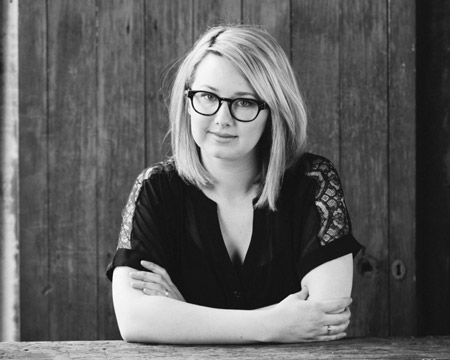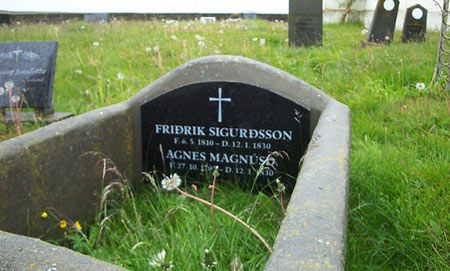Hannah Kent talks to Margo Lanagan about researching nineteenth-century Iceland, her mentorship with Geraldine Brooks and her astonishing debut novel,

The saga of Burial Rites began when, at 17, Hannah Kent spent a year in Iceland as an exchange student. For the first few months, ‘I didn’t speak the language, I was homesick, I was horribly conscious of the fact that I “did not belong” while simultaneously being very conspicuous, and the winter darkness compounded all of that discontent. I think I was probably depressed – I remember sitting in the shower, unable to stand up because I was so sad.’
Needless to say, Kent did stand up. She might admit to being ‘scared shitless’ while writing her debut novel, and she might have given a TED talk about her close acquaintance with impostor syndrome, but she has a steelier side. It’s visible in what little, as yet, can be found online about her, and it runs like reinforcing mesh through the grimly gorgeous Burial Rites. The literary magazine she co-founded and edits is called Kill Your Darlings, for goodness sake – clearly she’s no wimp.
She credits Iceland with this facet of herself. ‘My first time in Iceland forged my character completely. I became so sick of myself that I started to go for long walks in the snow. I’d tramp up the icy slope of the hill to where the cemetery was and look out over the town’s dark harbour to the mountains on the other side of the fjord, and watch the light shift and alter, and everything was set right and peaceable within me.’
Visiting a valley in north-west Iceland with one of her host families, she asked about the landscape they were driving through. The family pointed out three mounds on the bare plain; on one of these, they told her, a murderess called Agnes Magnúsdóttir had been beheaded, the last person to be executed in Iceland.

For a long time, the execution mound was only one of many impressions Kent brought back from that bleak, treeless and myth-soaked land. But four or five years later, she found herself ‘still filled with questions and curiosities about the murders’ that Agnes and her accomplices had committed. By the time she got permission to write her novel as a PhD in Creative Arts at Flinders University, she’d found that her murderess had left very little trace in the historical record, and that when people did mention Agnes they called her a witch or a monster and moved on. Kent’s project ‘to supply a more ambiguous portrayal of this woman’ was born.
Agnes Magnúsdóttir was beheaded with a broad axe in 1829, as was Fridrik Sigurdsson for the same murders. Between the night of the murders in 1828 and the day the axe fell, Agnes was first held in prison, and then billeted with a family on a farm at Kornsa, near the proposed execution site. Kent focuses on that time, that family and the young Assistant Reverend Thorvardur Jónsson, who was charged with readying Agnes to meet her maker, to show us the woman behind the crime, and the society that confined and shaped her.
How was Kent able, from Australia, to research an obscure Icelandic murderess? ‘At first, I struggled to find much information about the murders and Agnes’s life,’ she says. ‘I read indiscriminately: academic articles about everything from parish law, kin networks, smallpox epidemics and the supernatural, memoirs, Icelandic fiction, plays and poems, diaries written by British scientists arriving in Iceland to study geysers, song lyrics, recipes, the great and wonderful sagas. If it was about Iceland in the nineteenth century, I read it.’
During this phase, Kent felt she was ‘blindly feeling my way in the dark, making guesses that could well be completely incorrect’. But most of her guesses were right on the nail, as she discovered when she went back to Iceland for a six-week research trip. ‘This is where I found out about Agnes’s early life: from parish and ministerial records, censuses, letters from the trial, and so on. That was a real thrill, finally getting my hands on the primary sources after two years of pining for them!’
‘Much of the research,’ Kent admits, ‘and certainly the writing, was completed under an enormous shadow of self-doubt. I’d never written a novel before, and didn’t know how one goes about it. The thing is to keep going anyway. You get used to the shadow. I’m astonished by how clean the process seems, looking back. At the time it felt like only chaos and anxiety.’
A mentorship conducted by email with author Geraldine Brooks helped Kent in the later stages. ‘The ending was very grim, and very sudden – even more so than it is now. I think when I sent the manuscript to her, I was fussing at things on sentence-level – not seeing the forest for the trees. Geraldine brought my attention back to the themes of the story, its emotional truth.’ Brooks urged Kent to ‘let a bit more light in’ to a tale that of necessity would have to end in darkness and death.
The finished novel certainly packs a punch as it moves inexorably along its parallel tracks. Kent admits, ‘I was often emotional when writing. I felt the setting and characters and story all very intensely.’ But this is the Kill Your Darlings deputy editor writing here – not a drop of sentimentality leaks through, and the story is all the more powerful for this masterly restraint.
It feels like a just reward for Kent’s years of careful work that the novel has done so well so far. At the Australian Independent Bookseller Awards in March, eyes lit up at the mention of this book. Pre-publication press has been full of exciting phrases like ‘massive advance’, ‘multiple bidding wars’ and ‘foreign rights in how many countries?’ Such upfront buzz often raises expectations so high that the book itself can only disappoint. I have no such fears for Burial Rites; if there’s any justice in the world, it’s going to win every accolade going.
Margo Lanagan is the author of


